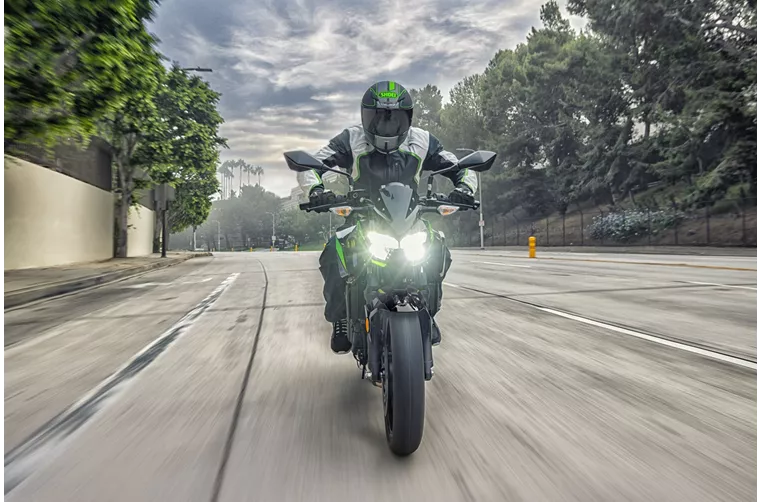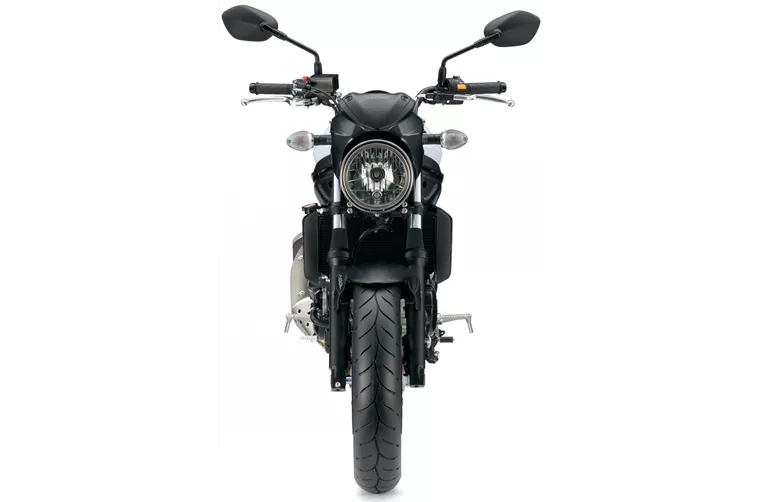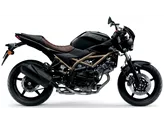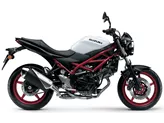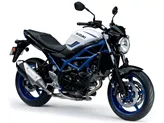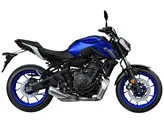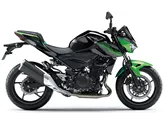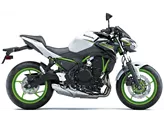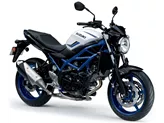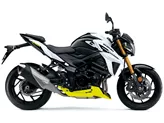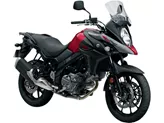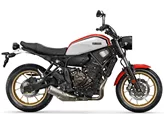Kawasaki Z 400 2023 vs. Suzuki SV 650 2017

Kawasaki Z 400 2023

Suzuki SV 650 2017
Visão geral - Kawasaki Z 400 2023 vs Suzuki SV 650 2017
The Kawasaki Z 400 model year 2023 and the Suzuki SV 650 model year 2017 are both naked bikes that offer a thrilling riding experience.
In terms of the engine and drivetrain, the Kawasaki Z 400 2023 features an inline twin-cylinder engine with a displacement of 399cc. It delivers 45 horsepower and 37 Nm of torque. The engine is fuel-injected and liquid-cooled, providing efficient and reliable performance. On the other hand, the Suzuki SV 650 2017 is equipped with a V-twin engine with a displacement of 645cc. It offers a more powerful performance with 76 horsepower and 64 Nm of torque. Like the Kawasaki, it also has fuel injection and liquid cooling.
Both bikes have similar suspension setups, with telescopic forks at the front and a swingarm with a monoshock at the rear. This configuration ensures a comfortable and controlled ride, with the ability to handle various road conditions. The chassis of both bikes is made of steel and features a tubular frame, providing a sturdy and stable platform.
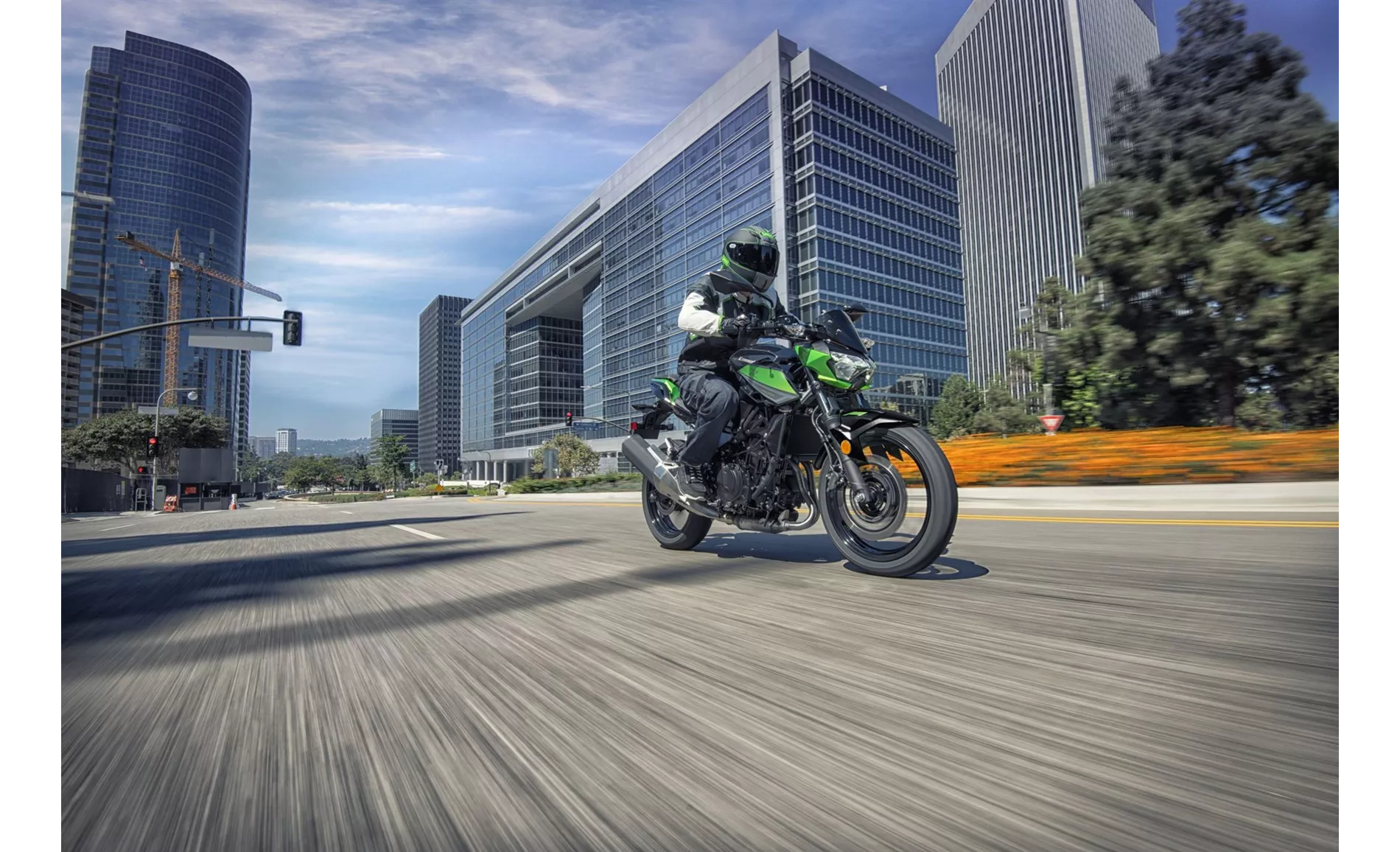
Kawasaki Z 400 2023
When it comes to braking, the Kawasaki Z 400 2023 is equipped with a single disc brake at the front with a diameter of 310mm and a dual-piston caliper. The Suzuki SV 650 2017, on the other hand, has dual disc brakes at the front with a diameter of 290mm and dual-piston calipers. While the Suzuki offers slightly smaller diameter discs, it compensates with dual discs for improved stopping power.
Both bikes come with advanced rider assistance systems, including ABS, which enhances safety by preventing wheel lock-up during braking. This feature is particularly useful in emergency situations or when riding on slippery surfaces.
In terms of dimensions, the Kawasaki Z 400 2023 has a narrower front tire with a width of 110mm, while the Suzuki SV 650 2017 has a wider front tire with a width of 120mm. Both bikes have 17-inch wheels at the front and rear, providing good stability and handling. The Kawasaki has a wheelbase of 1370mm, while the Suzuki has a slightly longer wheelbase of 1445mm. Both bikes have a seat height of 785mm, offering a comfortable riding position for most riders.
In terms of weight, the Kawasaki Z 400 2023 is lighter with a curb weight of 167kg, compared to the Suzuki SV 650 2017 which weighs 197kg. The Kawasaki also has a larger fuel tank with a capacity of 14 liters, while the Suzuki has a slightly smaller tank with a capacity of 13.8 liters.

Suzuki SV 650 2017
In terms of strengths, the Kawasaki Z 400 2023 offers a dynamic engine, a good chassis, and brakes, easy handling, and a mature appearance with high-quality finishing. On the other hand, the Suzuki SV 650 2017 has a smooth engine, playful handling, and an excellent chassis.
In terms of weaknesses, the Kawasaki Z 400 2023 has non-adjustable levers, which may not provide the perfect fit for all riders. The Suzuki SV 650 2017 has been criticized for having weak brakes, which may require additional effort to bring the bike to a stop.
Overall, both the Kawasaki Z 400 2023 and the Suzuki SV 650 2017 are impressive naked bikes with their own unique strengths and weaknesses. Riders looking for a more powerful and playful experience may prefer the Suzuki, while those seeking a lightweight and easy-to-handle bike may lean towards the Kawasaki. Ultimately, the choice between these two bikes will come down to personal preferences and priorities.
Especificações técnicas Kawasaki Z 400 2023 em comparação com Suzuki SV 650 2017
Prós e contras em comparação
Prós e contras em comparação
Kawasaki Z 400 2023
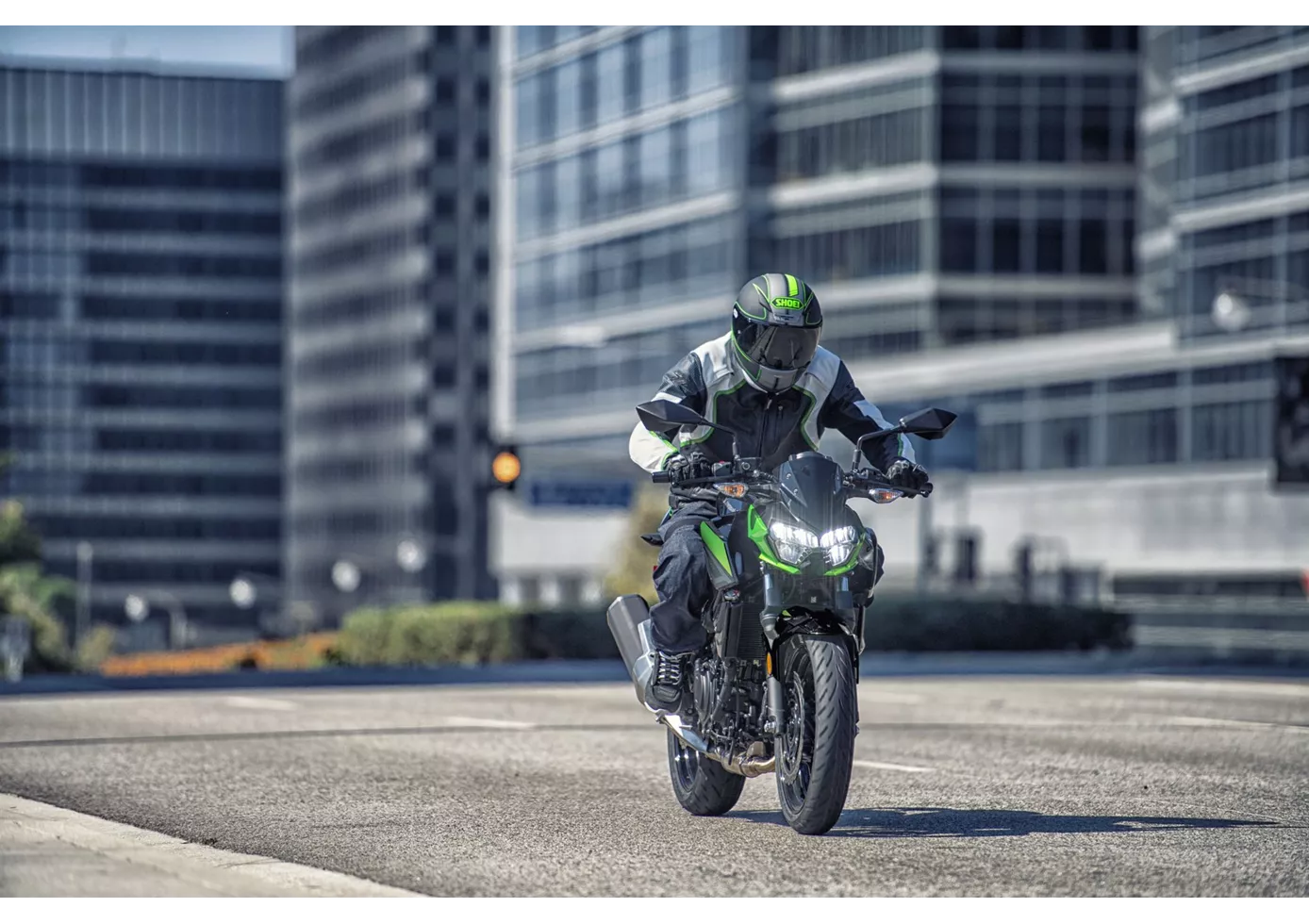
Uma entrada legal e sensata na classe A2. A Kawasaki Z400 marca pontos em toda a linha com o seu comportamento instintivo e o motor de dois cilindros em linha, que convence com uma boa resposta e potência suficiente. Não há como errar com esta moto naked e pode ignorar o facto de as manetes não serem ajustáveis - afinal, os custos têm de ser poupados em algum lado.
Suzuki SV 650 2017

A Suzuki SV 650 é acompanhada por uma longa história de sucesso que certamente continuará por muito tempo. O seu V2 flexível impressiona com uma resposta muito suave e muito binário. As dimensões compactas ajudam a fazer com que a mota pareça muito compacta. Isto será muito conveniente para os principiantes. O chassi também pontua com um manuseio lúdico. Infelizmente, o efeito de travagem não está ao nível do que seria de esperar de um veículo tão potente.
Comparação de preços Preço médio de mercado Kawasaki Z 400 vs Suzuki SV 650
There are a few key differences between a Kawasaki Z 400 2023 and a Suzuki SV 650 2017. In terms of price, the actual average prices of both motorbikes are almost the same. Compared to Suzuki SV 650 2017 there are more Kawasaki Z 400 2023 bikes available on the 1000PS.de Marketplace, specifically 89 compared to 6. It takes less time to sell a Suzuki SV 650 with 112 days compared to 123 days for the Kawasaki Z 400. Since model year 2019 1000PS.de editors have written 8 reviews for the Kawasaki Z 400 and 25 reviews for the Suzuki SV 650 since model year 2005. The first review for the Kawasaki Z 400 was published on 02/10/2018 and now has more than 23.200 views. This compares to more than 14.200 views for the first review on Suzuki SV 650 published on 26/09/2008.
